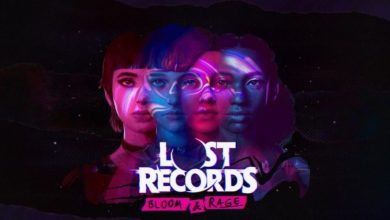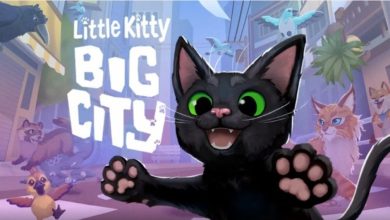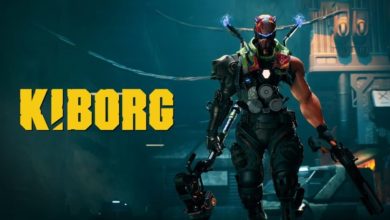Magical Realism That Hurts: Action Platformer South of Midnight Review
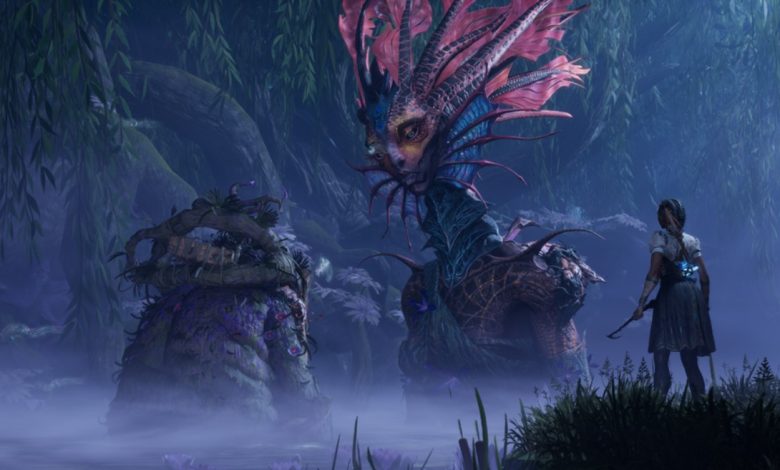
An action platformer with elements of magical realism and southern gothic, accompanied by the sounds of blues, takes the player into a bizarre world where voodoo, French folklore and Creole mythology intertwine with the realities of the Deep South of the United States. On paper, it sounds tempting, but in practice, the diversity plays a cruel joke on the authors, and individual elements of the gameplay pull the project in different directions, preventing it from gaining integrity. All the details are in our review.
Prospero’s Hurricane Chronicles
A hurricane is not just a natural phenomenon for the southern states of the USA, but a part of everyday reality. This merciless predator can destroy a house, take away loved ones and leave behind not only debris, but also wounds that do not heal for years. It is the hurricane that becomes the starting point in the story of Hazel Flood, a runner from the town of Prospero, who sets off on a journey after the house, carried away by a turbulent stream along with her mother.
Unable to cope with the elements, Hazel goes to the estate to Grandma Bunny to ask for help. But the haughty white aristocrat obviously does not favor the African-American relatives left after the death of her son and suggests that they simply wait out the storm. Hazel, exhausted, instantly falls asleep.
However, the dream is not destined to last long: the girl wakes up and finds herself locked in. In an attempt to escape the estate, Hazel hears mysterious voices that lead her to a secret room. In an old chest, she finds a pair of spinning hooks – at first glance, an ordinary grandmother’s tool, but with a surprise: the hooks awaken in Hazel the abilities of the Spinner – those who can affect the fabric of reality itself, interacting with the Great Tapestry.
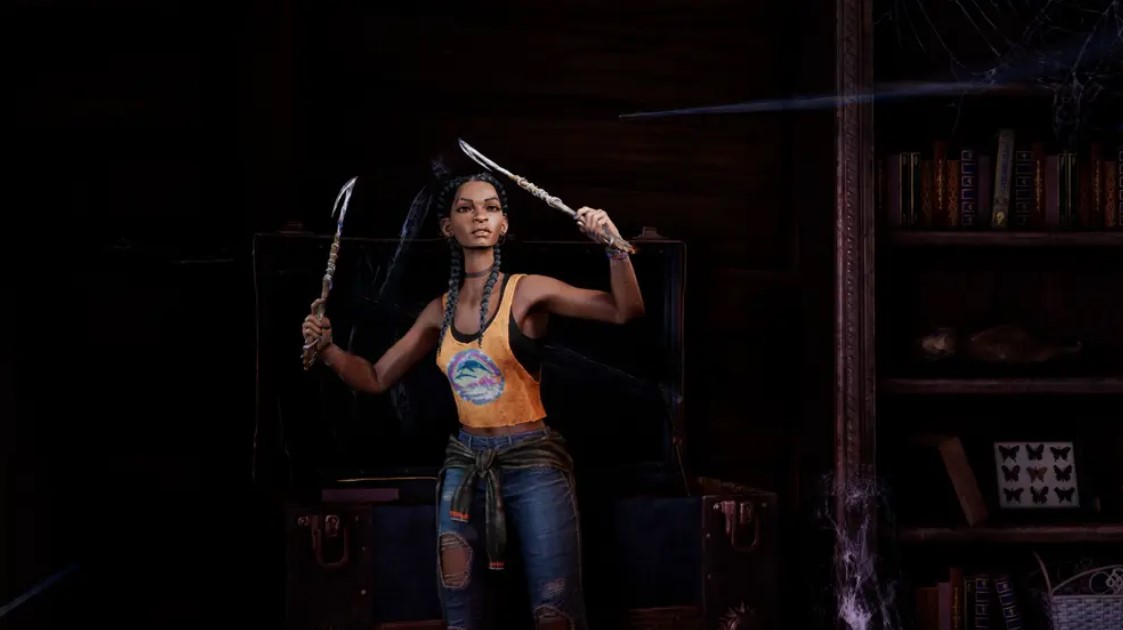
The Great Tapestry is a mythical structure that weaves the world. It imprints the fates, emotions, and memories of all people. When someone suffers, the threads of the tapestry distort, forming scars—clots of pain and trauma. These scars give birth to haints—malevolent spirits that are the embodiment of unresolved conflicts. The task of the Spinner is to “unweave” haints and scars to restore the broken fabric of the world.
Discovering her own strength, Hazel sets out on a journey through flooded villages and sawmills, mountain ravines and dark swamps where fairy tales and reality collide. Along the way, she must not only unravel scars and battle haints, but also uncover the truth about the myths surrounding Prospero, learn the secrets of her own family, investigate a case of mass child abductions and – as she embraces her new role – heal the pain of ghosts from the past in order to ultimately try to save her mother.
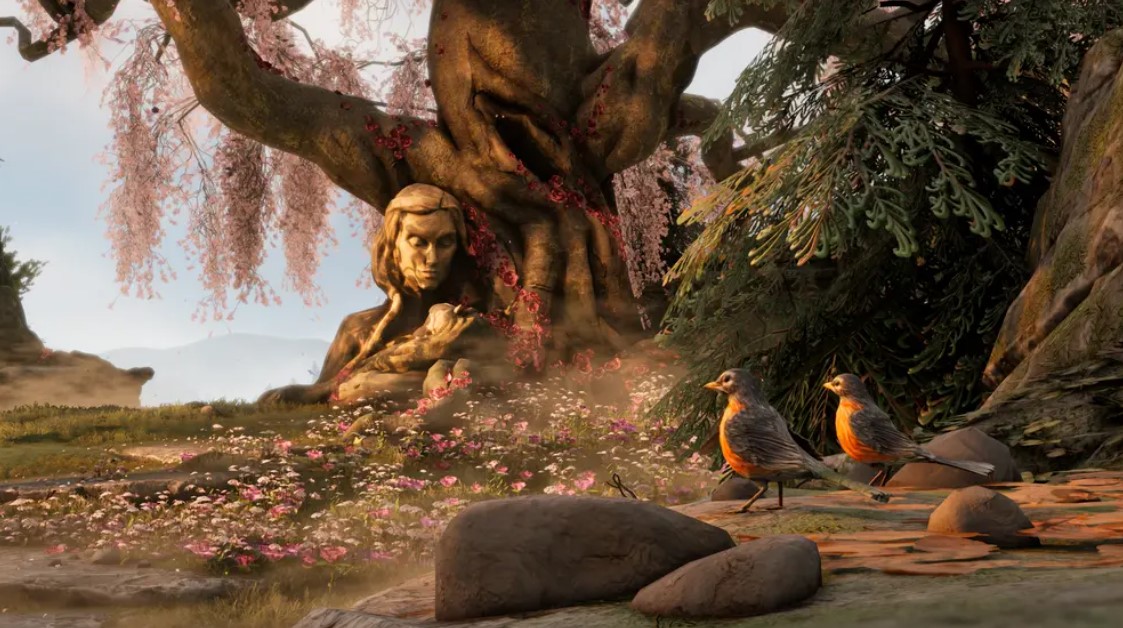
This is where the infamous consultants from Sweet Baby Inc., who, if the credits are to be believed, were responsible for the script and narrative, come in. The stories of people who have been traumatized in the past often develop weakly and do not always make clear sense – unless, of course, you consider a set of caricature-typical images such as envious relatives, careless parents, cruel slave owners and an unfair system. And not all of these episodes turn out to be truly important to the main plot.
Still, learning about the world and immersing yourself in its cultural context is truly entertaining. Some of the stories are touching, thanks in part to the excellent musical score that adds to the emotional impact. At its best, the game feels like a collaboration between Tim Burton and Pixar. And the plot itself has enough twists and turns to keep you interested and wanting to find out what happens next. However, all the atmospheric and dramatic potential is at risk of crumbling under the onslaught of poorly constructed and monotonous gameplay.
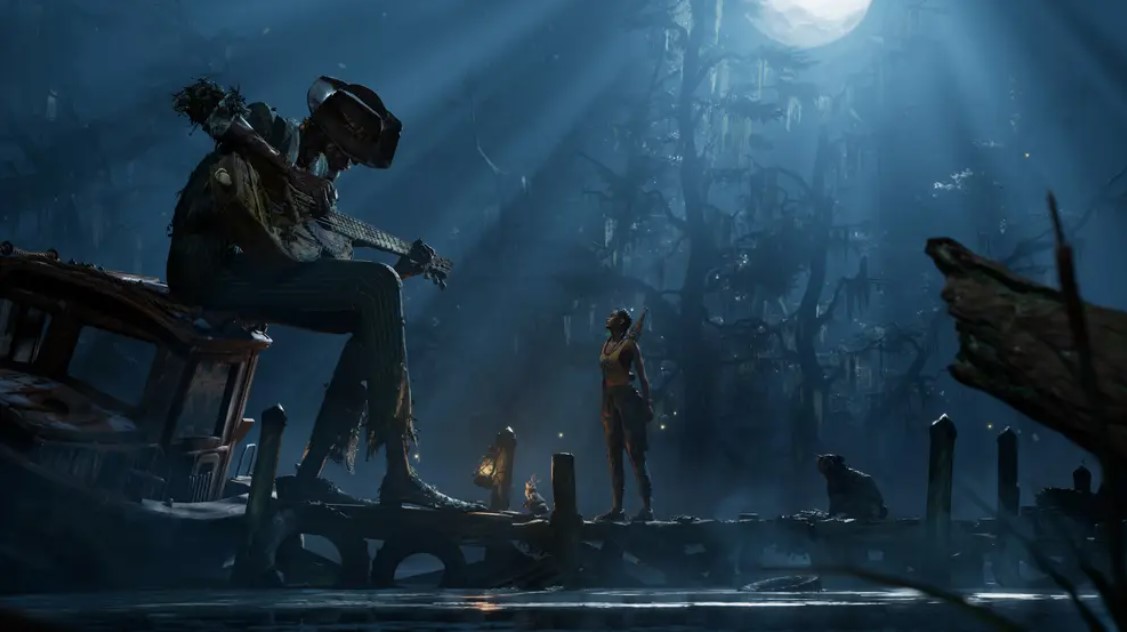
By the rule of three…or four
The campaign consists of fourteen chapters, during which we will have to do all of the above – but, frankly, there is not much pleasure in this.
Almost every chapter is built on the same template: we wander through a closed “gut-like” level with rare branches, in which resources for pumping and notes with lore are hidden. Along the way, we solve primitive puzzles like “move the box – climb higher”, find arenas with monsters and, defeating them, collect painful memories in a bottle. We repeat this three or four times, after which there is a segment in the spirit of a runner-platformer: you need to escape from an unknown fog, jumping over platforms, running along walls and using other abilities of the heroine.
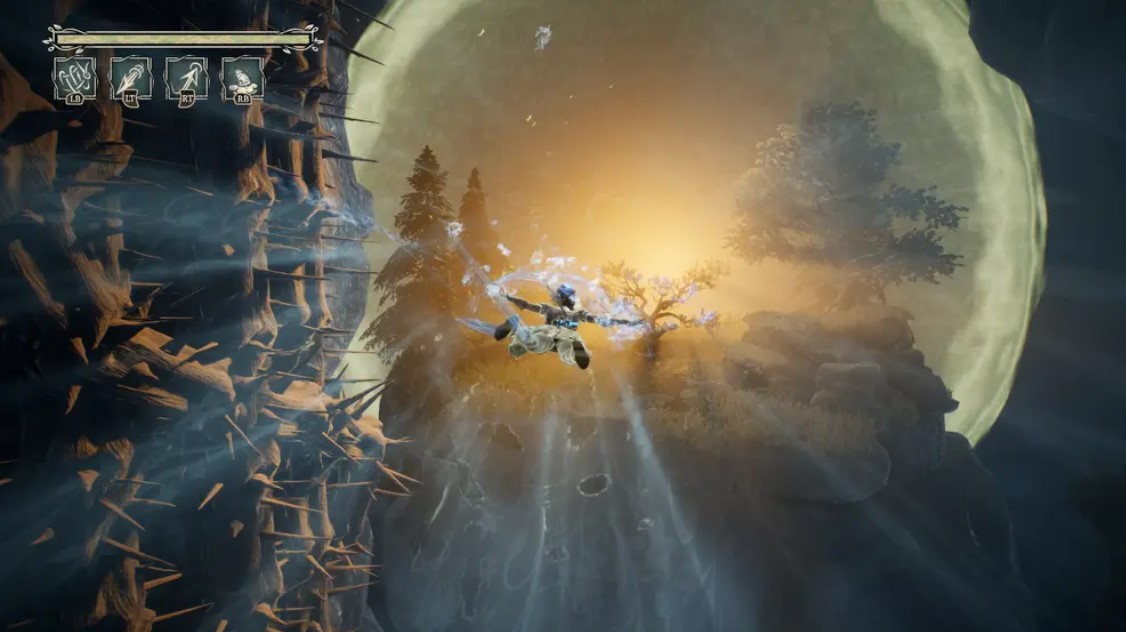
Sometimes there are also boss fights – four in total, to be exact. And if the first three can still surprise you with opponents (like a giant alligator), then in the finale the player is simply bombarded with crowds of haints, occasionally diluted with a chase from the same fog. The battles themselves do not shine with ingenuity and are built according to the same scheme – the same actions have to be repeated several times. For example, in the first fight you need to throw a stone at the bell to stun the boss and have time to hit him a couple of times – the rest of the time he is invulnerable.
Despite the abundance of features — like running on walls, double jumping, hovering, being pulled to handholds, and the ability to briefly make objects from the past materialize — the platforming in the game is very simple, and the checkpoints are so generously placed that sometimes you can even end up on the other side of the abyss if you suddenly fall. The only difficulty I encountered was in one particular moment in the finale — and even then, thanks to the crooked cinematic camera. Do you know where else the camera is crooked? In battles, of course!

Battles that don’t fit together
Hazel uses crochet hooks not only for mending wounds and socks, but also for tapping on the spines of haints. They are complemented by magical abilities that allow her to attract or repel opponents, entangle them, stunning them for a short time, and even lure them to her side with the help of a living stuffed animal named Crouton, who is also used in the game to get into places that are inaccessible to Hazel.
However, the arenas for fighting monsters are often very small, and most of the haints are noticeably larger than the main character. Because of this, it is impossible to adequately control the battlefield. Hazel is also quite fragile, and even on medium difficulty, enemy attacks can quickly end her life.
Combined with the rapid attacks of some opponents and the lack of any defensive tools other than dodging, this makes battles dynamic, but at the same time excruciating. Especially if you play on a high difficulty, where the developers have not come up with anything better than simply cranking up the enemy stats to the max.
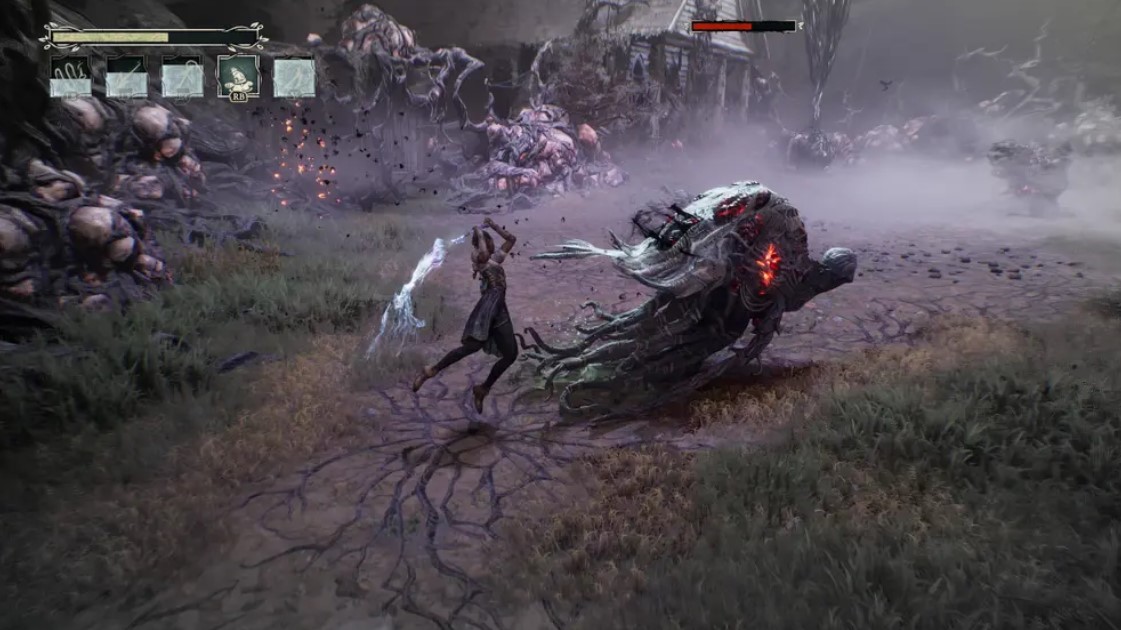
The process of “untangling” the haints is particularly depressing. Not only are the battles monotonous and quickly boring, but after the enemy’s health drops to zero, you need to “untangle” it – perform a cinematic finisher with the same animation, which seems longer the longer you play. If you don’t do this, the haint can restore health, and the whole process will have to be repeated.
Leveling up your magic is, I must say, quite effective, especially in the later stages when abilities work well in combination. But by that point, battles become so boring that you just can’t stop feeling like you’re replaying the same fight over and over again.
The game doesn’t spoil us with the variety and design of enemies either. At the beginning, we are met by one type of haints – a clot of tree roots with anthropomorphic features, whose attacks can still be distinguished and somehow read. But as we progress, more and more indistinct heaps of roots of different shapes and sizes appear, the behavior of which is sometimes impossible to predict. The developers’ imagination ends approximately in the middle of the game – after that, new enemies stop appearing at all.
It seems that the authors decided to close the “bingo” on monotony and at the same time selected a musical theme for the battles, which, unlike the perfectly selected tracks in the plot scenes, does not match what is happening on the screen and does not change throughout the game.
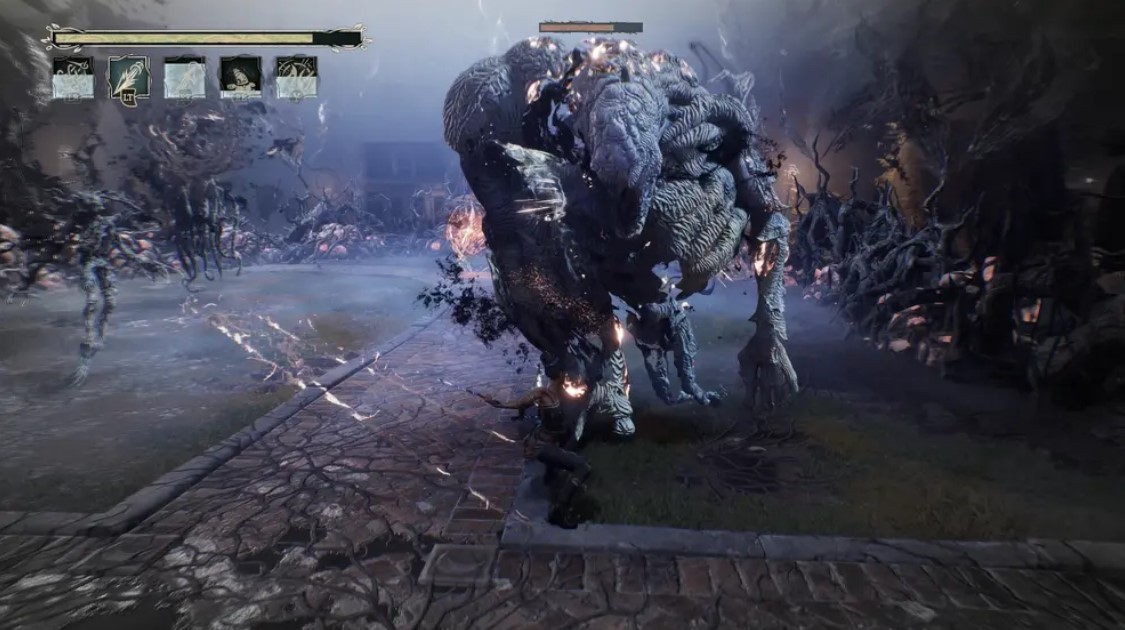
Beautiful Southern Gothic
If anyone can be praised for diversity, it is the artists. And not for the widely advertised stop-motion. Yes, the graphics here do not shine with technology, and the abundance of soapy textures sometimes goes off the scale even in corridor locations.
But the visual style – and, most importantly, the variety that is rare for this game – is expressed in the richly detailed and whimsical scenery. Combined with high-quality lighting, they largely create the unique atmosphere of a southern gothic fairy tale.
Throughout the journey, Hazel is accompanied by a huge fairytale catfish, who clearly speaks less than he knows. Everywhere there is abundant vegetation, flowers, animals like foxes and funny raccoons, giant peaches entwined with the roots of a house, signs of the times in the interiors of once-living quarters, and even an entire city floating on the rubble.
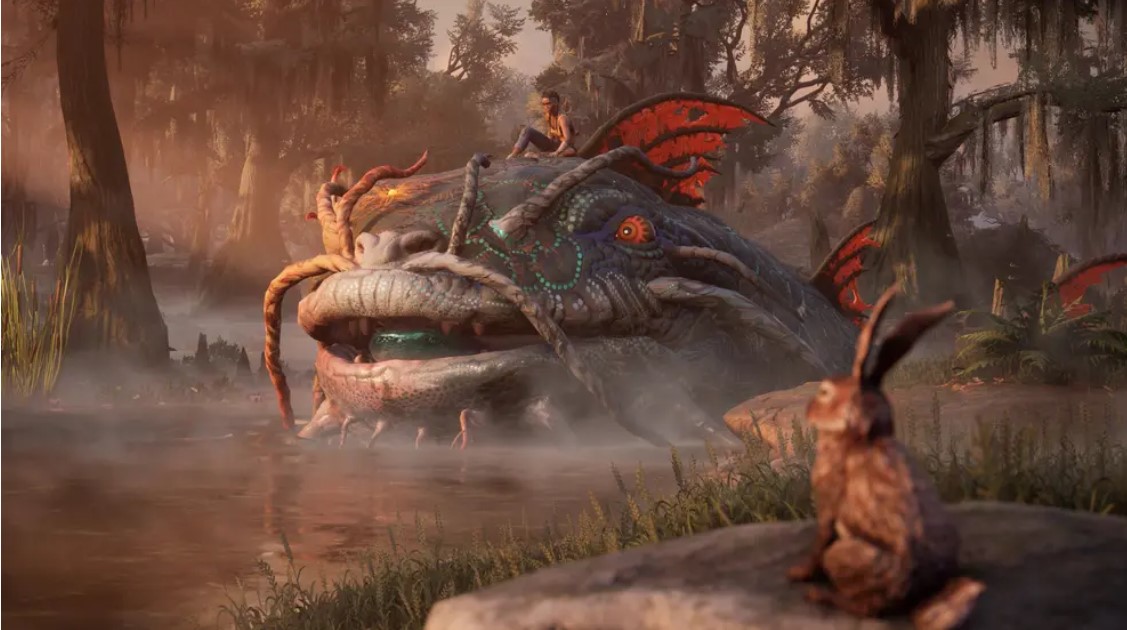
It seems like the environment was really the thing they put the most effort into, but the world still often feels dead because the scenery here is just scenery, and interaction with it is kept to a minimum.
Stop-motion in cutscenes looks organic, but in gameplay it seemed every now and then that this was not an artistic technique, but a performance problem – which, in fact, did not arise even once during the entire playthrough. After about ten minutes, I turned off the effect in the settings. However, I soon realized that the animations were originally created with this style in mind: without it, the heroine moves and fights awkwardly, if not ridiculously. Having returned the setting back, I eventually got used to it – and by the end, I could no longer imagine the game any other way.
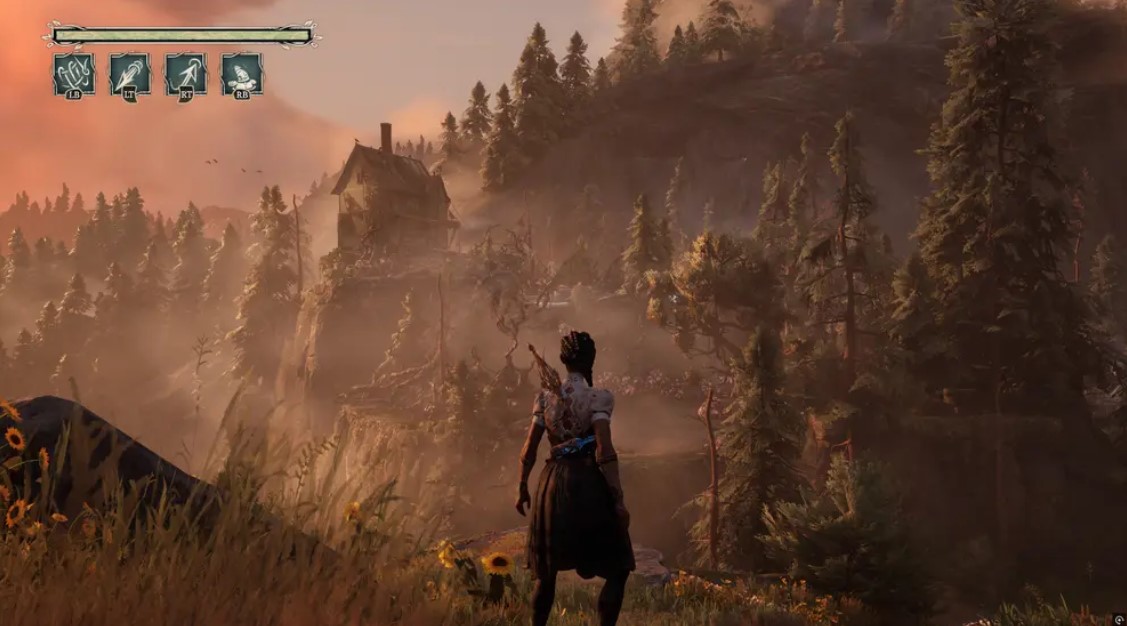
Diagnosis
South of Midnight is neither a failure nor a masterpiece. It is an extremely uneven game that evokes mixed emotions. I went through all stages of acceptance during the gameplay. It seems as if the authors should not have made an action platformer at all, because the active gameplay is choked by monotony. There are many potentially interesting elements that are designed to turn the project into something more than an interactive fairy tale, but none of them seem truly refined and brought to mind – which is why the same combat becomes boring by the fifth hour of the game.
At the same time, the game, fortunately, does not slide into moralizing. The theme of slavery is presented through images and metaphors, and not head-on, as is customary today. All the characters are in their places, without going overboard for the sake of representation. Moreover, it is the original setting, the atmosphere of a dark fairy tale, the musical design, as well as the story that prevent the game from falling apart completely. Thanks to them, even the negative impressions from the unfinished mechanics fade, and through the second half of the game you fight your way through with a strong desire to reach the end – although, perhaps, you will want to reduce the difficulty to spend less time on battles. As I did.
Is South of Midnight worth your attention? Perhaps, if you are attracted by the magical realism of the American South. But be prepared for the fact that the game simply has nothing else to surprise you with – it is just a normal game, without any claims to anything more. I definitely do not recommend it for passing. If you have Game Pass, the game is available by subscription: download, launch – in the first two hours it will show almost everything that it is capable of, with the exception of pumping up magical abilities. Perhaps this southern gothic will be to your liking.
Pro
- Original setting
- Fairytale atmosphere
- Interesting visual solutions
- Catchy soundtrack
Contra
- Monotonous battles
- Poor enemy design
- The world is beautiful but dead
- Lazy level design and mechanics
***
All images in this material are copyright Compulsion Games / Xbox Game Studios. Pictures. Games uses them for informational and research purposes and does not claim ownership of them.

